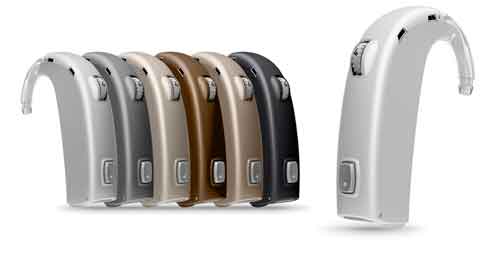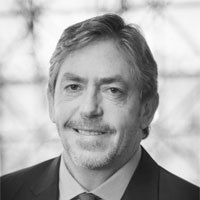Super Power Focus: Oticon Dynamo and Sensei SP Hearing Aids Address the Needs of People with Severe and Profound Hearing Loss Across the Lifespan
Carolyn Smaka: Don, nice to talk with you again. Our last conversation was a high level overview of the Oticon fall launch that includes Dynamo and Sensei SP in the super power category, and Plus Power in the power category - readers who missed it can access it here.

Don Schum: The ideal candidate for Dynamo is an adult with severe or profound hearing loss who really wants to get the most out of his or her hearing. At Oticon, our default approach is to try to use the full broadband spectrum of sound even for patients with this degree of hearing loss. Other approaches on the market tend to discount the high frequencies entirely for this demographic.
With severe to profound hearing loss, we know there is a lot of variability from patient to patient, and we believe it is a mistake to discount the high frequencies from the start. We start with the full bandwidth of sound. If the patient does turn out to be a candidate for frequency lowering, then we have a very effective frequency lowering system called Speech Rescue.
Sensei SP and Dynamo share similar features, but Sensei SP is specifically for pediatrics. It includes, as you would expect, pediatric colors, but also features that we have pioneered in the field, such as LED in order to allow the parents, teachers and caregivers to know the functional status of the hearing aid at any moment in time.
In addition, Sensei SP includes leading features in FM connectivity such as Voice Priority I, and others, that are important for children. It also offers Speech Rescue. We know that clinicians who fit newly identified, young children are concerned about maximizing speech and language development. If a clinician decides that the best approach is to use a frequency lowering technology, then we believe Speech Rescue is a very sensible choice.
Carolyn: Let’s review Speech Rescue, which is a key feature of both Dynamo and Sensei SP.
Don: Oticon’s approach to frequency lowering, Speech Rescue, works in combination with Speech Guard E. Speech Guard E controls the reaction of the compression system in order to provide full audibility of the signal, and preserves as much detail of the speech waveform as possible.
Speech Guard E is particularly important for patients with severe and profound hearing loss. People with these types of losses are very dependent on the temporal aspects of the signal, which Speech Guard E works at preserving.
Speech Rescue presents a full bandwidth of sound including the high frequencies. At the same time, it identifies particular sections of the bandwidth where the patient might be at risk for misperception because of a lack of audibility or a lack of usability. It copies that information and replicates it very carefully in the mid frequencies. We call this approach “copy and keep” - it keeps the high frequencies, while copying it to the mid-frequencies where there is generally better functioning.
Speech Rescue and Speech Guard E work together: Speech Rescue captures high frequency information and reproduces it in the mid frequencies, and then Speech Guard E places that information in the remaining dynamic range of the patient, in a way that preserves as much detail as of the speech waveform.
Carolyn: How does Speech Rescue differ from other approaches to frequency lowering?
Don: What differentiates Speech Rescue from frequency compression is that we do not compress anything in terms of frequency. Oticon has a long legacy of providing world-class solutions for severe and profound hearing loss. We know that no two patients are alike, and we don’t want to discount the fact that some patients will be able to use the high frequency information. So, we leave high frequency information in, and at the same time copy that important information and reproduce it in the better functioning mid frequency range.
Carolyn: Tell me about the new housings for Dynamo and Sensei SP.
Don: Both Sensei Super Power and Dynamo are a brand new development from a mechanical standpoint. We have created a new casing and we have developed a new receiver assembly to achieve the needed gain and output that’s so important for patients with this amount of hearing loss. Both Dynamo SP and Sensei SP have an MPO of 139 dB SPL and a peak full-on gain of 78 dB.
In the development of previous super power solutions over the years, our engineers designed a receiver assembly (also referred to as the “loudspeaker assembly”) that achieved the desired maximum gain and output, kept distortion to a minimum, and resulted in excellent sound quality. We’ve extended that concept in these new products.

Oticon's Dynamo super power device in assorted colors.
Carolyn: What should a professional know about fitting Dynamo or Sensei SP?
Don: Let’s start with Dynamo. Most often, when you are fitting an adult with severe and profound hearing loss, the patient is an experienced hearing aid wearer. Experienced users with this degree of hearing loss are understandably dependent on their hearing aids, and also very connected to the way the hearing aids sound. They may have had several devices over the years, and worked to fine tune them to their needs and preferences in terms of audibility, loudness, and so forth. When we fit new technology that offers better signal processing, we may run into resistance from the patient because the new technology does not sound or work like the old device.
Because of that, we have developed transitioning guidelines to help hearing care professionals counsel patients, so that they give the new fitting time to experience the benefits. It’s important that patients understand that time is key in experiencing the benefits of new technology. Those benefits may not be immediately apparent, especially if the patient is focused on other issues such as the sound of the new device matching the sound of the old one.
With Sensei SP and pediatric fittings, the main fitting focus is verifying that the fitting is meeting evidence-based prescriptive targets, as well as counseling the family regarding use of the device, and determining whether to use Speech Rescue.
The Genie software supports the professional every step of the way in fitting the devices and personalizing them for each individual. It will guide them through the set up of features such as Speech Rescue or the world-class feedback cancellation system, enable them to manage connectivity options, and it even supports bimodal fitting. Bimodal fitting refers to fitting a hearing aid on the contralateral side to a cochlear implant, and there are different recommendations in terms of settings and features when the hearing aid is fit in this configuration.
Carolyn: Where can professionals get more information or training on Dynamo and Sensei SP?
Don: More information can be found on our website. We also invite professionals to contact their Oticon rep and schedule time to meet with one of our account managers or one of our trainers. We also will have multiple courses offered on AudiologyOnline for CEU credit, and shorter 10-15 minute courses on individual topics.
That way, if a hearing care professional is scheduled to see a patient and just wants to review a feature like Speech Rescue, for example, he or she can quickly brush up on the knowledge needed to best serve the patient.
Carolyn: Thanks for your time today in reviewing the product details, Don.


